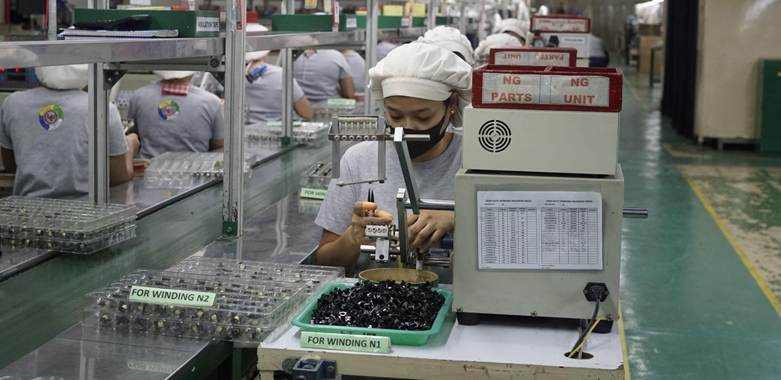One way to mitigate the risks of losing the semiconductor industry’s foothold in the global supply chain is to accelerate the training, skilling, and upskilling of the Filipino workforce, an electronics industry leader pointed out.
Ferdinand “Perry” Ferrer, vice president of the Philippine Chamber of Commerce and Industry, and also chairman and CEO of EMS Group of Companies—one of the leading electronics manufacturers in the country—emphasized this point at the launch of the 51st Philippine Business Conference. The event, which will tackle the theme “The Future Is Now: Unleash the Power of Digital Transformation,” is scheduled for Oct. 20–21 at the SMX Convention Center Manila.
According to Ferrer, education is key to maintaining the competitiveness of the domestic electronics industry, the Philippines’ top dollar earner.

Following Trump’s unilateral move to impose a 100 percent tariff on semiconductor exports to the U.S.—impacting several trading partners including the Philippines—Ferrer said, “None in the world now is business as usual.” Although the tariff on electronics is not yet final, the U.S. announcement has put electronics firms exporting to the U.S. on alert.
Thus, to counter the risk of falling behind, there is a need to further hone the skills of Filipino workers—one of the country’s key capital assets.
The competitiveness of the Philippine workforce has come to the forefront because Asia powers the electronics industry’s global supply chain. Ferrer explained that Asia—led by China, ASEAN, Taiwan, Japan, and South Korea—is the apparent powerhouse when it comes to the global electronics supply chain.
With that, Ferrer said, the Philippines should not be sending out workers, but rather “upskill and reskill them and keep them here.”
The Semiconductor and Electronics Industry Philippines Foundation Inc. (SEIPI), which groups the country’s largest semiconductor and electronics firms, said the planned 100 percent tariff on electronic chip exports to the U.S. market would spell “disaster” for the Philippines’ single largest dollar earner.
“100 percent tariff would be devastating,” said Dan Lachica, SEIPI president.
Lachica emphasized that 70 percent of Philippine exports are semiconductors. The sector exported $30 billion last year, 15 percent of which went to the U.S.
Public-private sector cooperation
The private sector is now working closely with the Technical Education and Skills Development Authority (TESDA) and the Department of Education to accelerate the upskilling of existing workers, as well as the skilling of potential senior high school workers, through the implementation of the Technical and Vocational Education and Training (TVET) program.
“Once we are able to implement that fast, as we heard from the President in his last SONA, that the skilling and upskilling is really, I believe it will be our number one asset—not just in the next three or five years, but decades to come,” said Ferrer.
That’s why, he said, the upcoming 51st PBC highlights digital transformation, because connectivity is really the “grassroots foundation on how we can equalize all this training and upskilling.”
Government agencies and the industry are cooperating to formalize and solidify the relationship.
Declining manufacturing
The 2022 Annual Survey of Philippine Business and Industry (ASPBI): Manufacturing, conducted by the Philippine Statistics Authority, showed a decline in the number of companies engaged in manufacturing.
Some of the industries comprising the sector include the manufacture of electronic components, other food products, motor vehicles, refined petroleum products, and beverages.
Preliminary results of the 2022 ASPBI showed that a total of 23,361 establishments in the formal sector were engaged in manufacturing—a 7.3 percent decrease from the 25,279 recorded in 2021.
In 2022, the study reported that a total of 1,195,082 workers were employed in the Philippine manufacturing sector—a 2.0 percent increase from the 1,172,195 employees recorded the previous year. The majority of this workforce were paid employees, while the remaining 0.7 percent were working owners and unpaid workers.
Among industry groups, the manufacture of electronic components generated the most employment, accounting for 12.9 percent of total national sector employment, or 153,865 workers. The manufacture of other food products followed with 126,181 workers, representing a 10.6 percent share. These two industries combined account for 23.4 percent of total manufacturing employment in the country.




